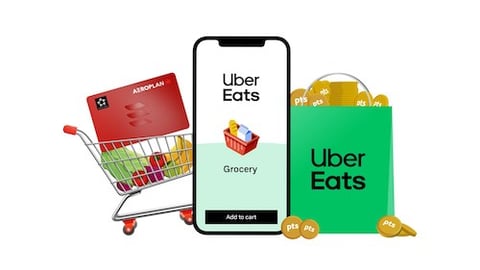Loyalty members drive online ordering at c-stores: Report
A new report from Paytronix shows a higher percentage of online orders in c-stores are being made by loyalty members, much more than at full-service and quick-service restaurants.
According to the Paytronix Online-Ordering Report 2023, while in-store orders have rebounded since the start of the pandemic, digital channels made up 25% to 35% of all restaurant and convenience store orders in 2022, up from less than 10% pre-pandemic.
Of those digital orders in c-stores, between 50% to 60% of customers placed them as a member of the retail brand’s loyalty program.
That represents a 22% lift in online orders made by loyalty guests in c-stores last year versus 2021. The trend has continued into 2023, with March numbers on the high end of that 50% to 60% range.
For comparison, FSRs saw a 9% increase in this measure, to just under 20% of all digital orders being made by loyalty members. QSRs, meanwhile, recorded a 26% increase, to around 45% of digital orders coming from the loyalty segment.
“Convenience stores have seen particular success linking their loyalty programs to ordering options,” says Jeff Hoover, director of c-store data insights at Paytronix.
“Often times, it’s an awareness issue,” he elaborates in an interview with CSNC. “Loyalty offers more communications touchpoints to introduce the online ordering service than non-loyalty, so this helps explain why there are more loyalty guests participating, beyond their explicit brand loyalty.”
That doesn’t mean c-stores should ignore non-loyalty members, however.
“Looking beyond digital communications, brands need to elevate online ordering signage in-store and at the pump to increase overall adoption. This is critical and oftentimes overlooked because of competing loyalty/marketing/promotional initiatives,” says Hoover. “They should also message the value in loyalty and what they can get in points or instant value by way of discounted items in their current order. Something like, ‘Here’s how many points you’d earn with your order today.’”
“If a non-loyalty member is interested in ordering online, they already must enter all of their personal information to place the order, so brands should use that touchpoint to encourage them to join loyalty with one easy click,” he adds.
The report also includes a case study from Family Express, an upscale convenience store chain in Indiana with 81 locations, to highlight how brands can drive online ordering.
On Feb. 9 (National Pizza Day), Family Express offered an online order of two extra-large pizzas for $12, and sent the offer only to customers who had visited locations with online ordering, or nearby stores, within the last 60 days.
The promotion was a success, with 10x the number of typical daily orders, 70% of the orders coming through mobile and an average $6 spent in add-on purchases. More importantly, Family Express enjoyed a sustained lift in online orders of 10% in February over the previous month.
[Read more: "Parkland plans to build on loyalty"]
Hoover notes opportunity is ripe for customer segmentation when it comes to online ordering promotions, particularly when connected to the loyalty group.
“This is where you really want your loyalty and online ordering software to work closely together,” he says. “Segmentation is a great tool to further tailor the messaging and offers promoting online ordering to cohorts of similar guests. Instead of offering the same incentive to all guests, you could promote richer offers to frequently visiting, higher value guests and just use messaging possibly without an offer to less attractive segments.
“While it’s fine to look at demographics, and we find it interesting, our clients tend to focus on behaviour, which is why we recommend segmenting guests by online order history,” he adds. “We can easily send a series of increasingly rich offers to loyalty guests who have never ordered online to convert them to that channel as well.”







